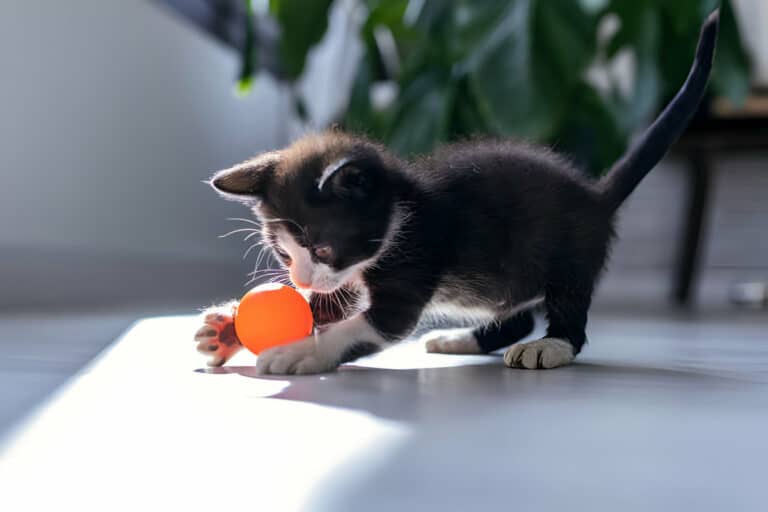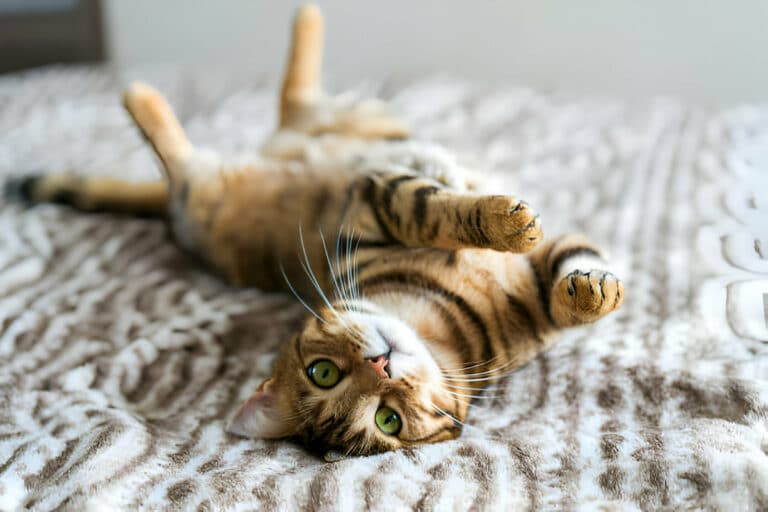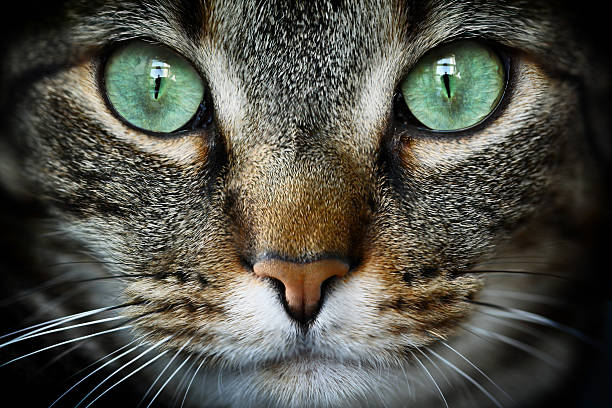10 Tips For Correcting Problematic Cat Behavior
Understand the Behavior
Your cat’s behavior can sometimes be a mystery, but understanding the reasons behind it is key to correcting problematic behavior. Cats are complex creatures with their own unique personalities, preferences, and instincts. By taking the time to understand your cat’s behavior, you can address issues more effectively and create a harmonious environment for both you and your feline friend.
One common problematic behavior in cats is scratching furniture. Cats scratch to mark their territory, stretch their muscles, and maintain their claws. Instead of punishing your cat for scratching, provide appropriate scratching posts and toys to redirect this behavior. Understanding why your cat scratches will help you find a solution that works for both of you.
Another common issue is inappropriate elimination, such as urinating outside the litter box. Cats may avoid their litter box due to stress, medical issues, or dislike of the litter type. By identifying the underlying cause and addressing it, you can help your cat feel more comfortable and confident using the litter box.
Aggression in cats can also be a concern, whether directed towards humans, other pets, or both. Cats may become aggressive due to fear, pain, territorial disputes, or lack of socialization. Understanding the triggers for your cat’s aggression will allow you to take steps to manage and modify this behavior effectively.
Overall, taking the time to understand your cat’s behavior is crucial for addressing and correcting problematic behavior. By approaching issues with empathy, patience, and a willingness to learn, you can strengthen your bond with your furry companion and create a more harmonious living environment for everyone involved.
Seek Professional Advice
Consult a Veterinarian
One of the first steps in addressing problematic cat behavior is to consult a veterinarian. Sudden changes in behavior could be a sign of underlying medical issues such as pain or illness. A thorough physical exam and possibly some diagnostic tests can help determine if there are any health concerns contributing to the behavior problems.
Hire a Behaviorist
On some occasions, working with a certified animal behaviorist may be necessary to address complex behavior issues in cats. Behaviorists are professionals who specialize in understanding animal behavior and can provide valuable insights into why your cat may be exhibiting certain behaviors. They can develop a behavior modification plan tailored to your cat’s unique needs.
Plus, behaviorists can provide guidance on how to implement positive reinforcement techniques to encourage desired behaviors and discourage unwanted ones. Their expertise can be invaluable in resolving behavior problems and improving the overall well-being of your cat.
Provide Adequate Stimulation
Interactive Toys
Little do many cat owners realize that providing interactive toys can significantly reduce problematic cat behaviors. Cats have a natural instinct to hunt and play, and without an outlet for these behaviors, they may turn to destructive habits. Interactive toys such as laser pointers, feather wands, or puzzle feeders can keep your cat engaged and mentally stimulated, preventing boredom and potential issues.
Regular Playtime
To ensure your cat is getting enough physical and mental exercise, it’s important to schedule regular playtime sessions. Cats need daily play sessions to release pent-up energy and prevent behavior problems. On top of keeping them physically active, playtime also helps strengthen the bond between you and your feline friend.
It is recommended to spend at least 10-15 minutes engaging in interactive play with your cat each day. Use toys that mimic natural hunting behaviors to keep your cat fully engaged. Vary the toys and activities to prevent boredom and ensure your cat is getting the mental stimulation they need to thrive.
Establish a Routine
Clearly, establishing a routine is crucial when it comes to correcting problematic cat behavior. Cats thrive on consistency and predictability, so implementing a structured daily schedule can help in addressing various behavioral issues.
Feeding Schedule
To promote good behavior in your cat, it’s important to stick to a regular feeding schedule. Cats are creatures of habit, and having consistent mealtimes can create a sense of security and stability for them. Make sure to feed your cat at the same times each day and avoid free-feeding to prevent obesity and establish a routine.
Consistent Playtimes
While having a feeding schedule is vital, don’t overlook the significance of consistent playtimes with your cat. Interactive play is not only a great way to bond with your feline friend but also helps in channeling their energy positively. Cats are natural hunters, and engaging them in play sessions mimics their natural instincts and prevents boredom and behavioral issues.
You can schedule play sessions a few times a day, aiming for at least 15-20 minutes of active play each time. Use toys that mimic prey and encourage your cat to chase, pounce, and stalk. By incorporating playtime into your routine, you can help your cat stay mentally and physically stimulated, reducing the likelihood of them resorting to destructive behaviors.
Use Positive Reinforcement
Treat Rewards
For a cat, good behavior should be met with positive reinforcement. Treat rewards can be an effective way to reinforce desired behaviors, such as using a scratching post instead of the furniture or using the litter box consistently. Make sure to use small, tasty treats that your cat loves to ensure they are motivated to continue the good behavior.
Affection and Praise
You’ll find that cats respond well to affection and praise. When your cat exhibits the behavior you want to encourage, such as using the scratching post or playing with their toys instead of scratching the carpet, be sure to give them love and attention. Cats thrive on positive interactions with their owners and will be more likely to repeat the desired behavior when it is met with praise.
For instance, when your cat uses the scratching post instead of the couch, you can offer verbal praise, petting, or even a treat to reinforce the behavior. This positive reinforcement will help your cat understand what is expected of them while strengthening the bond between you and your feline friend.
Avoid Punishment
No Physical Discipline
Even though it can be tempting to resort to physical discipline when your cat exhibits problematic behavior, it is vital to avoid this approach at all costs. Physically punishing your cat can lead to fear, aggression, and damage to your relationship with your feline companion. Cats do not respond well to physical punishment and are more likely to become anxious or aggressive as a result.
Redirect Negative Behavior
Punishment is not the most effective way to correct problematic cat behavior. Instead of focusing on what not to do, redirect your cat’s negative behavior towards more appropriate alternatives. For example, if your cat is scratching the furniture, provide them with a scratching post and encourage them to use it by sprinkling catnip on it. This way, you are teaching your cat what behaviors are acceptable without using punishment as a means of correction.
Discipline
Redirecting negative behavior is a more proactive and positive method of correcting problematic cat behavior. By offering appropriate outlets for your cat’s natural instincts and needs, you can effectively discourage them from engaging in undesired behaviors. This approach not only helps in correcting their behavior but also strengthens the bond between you and your feline friend.
Create a Safe Environment
Safe Hiding Places
All cat owners know that cats love to find cozy spots to retreat to when they need some space. You can help alleviate your cat’s stress by providing safe hiding places in your home. This could be a cat tree, a covered bed, or even a cardboard box with a blanket inside. These hiding spots can help your cat feel secure and calm, especially in busy or noisy environments.
Stress-Free Atmosphere
If your cat is displaying problematic behavior, it might be a sign that they are feeling stressed. Cats are sensitive animals and can easily become stressed by changes in their environment, such as new pets, loud noises, or even rearranging furniture. To create a stress-free atmosphere for your cat, try to maintain a consistent routine and provide them with a quiet, calm space where they can relax and feel safe.
Environment plays a crucial role in shaping your cat’s behavior. By ensuring that your cat has access to safe hiding spots and a stress-free atmosphere, you can help prevent and correct problematic behaviors. Note, a happy and comfortable cat is more likely to exhibit positive behavior and be a joy to have around!
Maintain a Clean Litterbox
Regular Cleaning
Many cat behavior problems can be attributed to a dirty litterbox. It is crucial to maintain a clean litterbox to ensure your cat feels comfortable using it. Regular cleaning is key to preventing your cat from seeking out alternative, less sanitary places to relieve themselves. Make sure to scoop waste daily and change the litter completely at least once a week to keep the box fresh and inviting for your cat.
Proper Location
Maintain a clean litterbox by placing it in a quiet, easily accessible location. Cats are private creatures and prefer a calm and quiet spot to do their business. Avoid placing the litterbox near their food and water dishes as cats prefer to keep these areas separate. Additionally, try to keep the litterbox away from high traffic areas to give your cat a sense of privacy while they use it.
Cleaning the litterbox regularly not only keeps odors at bay but also prevents the buildup of harmful bacteria that can lead to your cat avoiding the litterbox altogether. Cats have a strong sense of smell, and a dirty litterbox can be a major source of stress for them. By maintaining a clean litterbox, you are not only promoting good hygiene but also ensuring your cat’s well-being.
Encourage Scratching Appropriately
Scratching Posts
Even though scratching is a natural behavior for cats, it can be frustrating when they target your furniture. To redirect their scratching instincts, provide them with appropriate scratching posts. Cats love to stretch and scratch, so make sure the scratching post is tall enough for them to fully extend their body. Place the scratching post near their favorite resting spots or by the areas they tend to scratch the most.
Discourage Furniture Scratching
Appropriately discouraging furniture scratching involves making the furniture less appealing for your cat to scratch. You can do this by covering the furniture with double-sided tape or aluminum foil, as cats dislike the texture. Additionally, you can try using citrus-scented sprays or pheromone diffusers near the furniture to deter scratching.
This will help guide your cat towards the scratching posts and away from your furniture, ultimately teaching them appropriate scratching behavior.
Address Aggression Gently
Remain Calm
To address aggression in cats, it’s crucial to remain calm. When dealing with a cat that is showing signs of aggression, it’s important to avoid escalating the situation by yelling or physically reprimanding the cat. Stay calm and in control of your emotions to help diffuse the tension and avoid further aggressive behavior. Cats can pick up on our energy, so remaining peaceful can help de-escalate the situation.
Separate Fighting Cats
Fighting between cats can be a common issue in multi-cat households. When cats are engaged in a physical altercation, it’s important to separate them immediately to prevent any injuries. Use a blanket or cardboard to create a barrier between the cats, or carefully pick up one of the cats and move them to a different room. This will help prevent further aggression and allow the cats to calm down before reintroducing them to each other.
With multiple cats in a household, it’s necessary to provide enough space, resources, and attention to prevent territorial disputes that can lead to fighting. Ensuring each cat has their own food, water, litter box, and resting spaces can help reduce the chances of conflicts arising.
FAQ
Q: Why is my cat exhibiting problematic behavior?
A: Cats may display problematic behavior due to various reasons such as stress, boredom, illness, lack of proper training, or changes in their environment.
Q: How can I correct my cat’s problematic behavior?
A: To correct your cat’s problematic behavior, provide mental and physical stimulation, establish a routine, use positive reinforcement, address any underlying medical issues, and seek help from a professional behaviorist if needed.
Q: Is it possible to train a cat to stop unwanted behaviors?
A: Yes, it is possible to train a cat to stop unwanted behaviors through consistency, patience, and understanding of feline behavior. With the right approach, most problematic behaviors can be corrected successfully.







